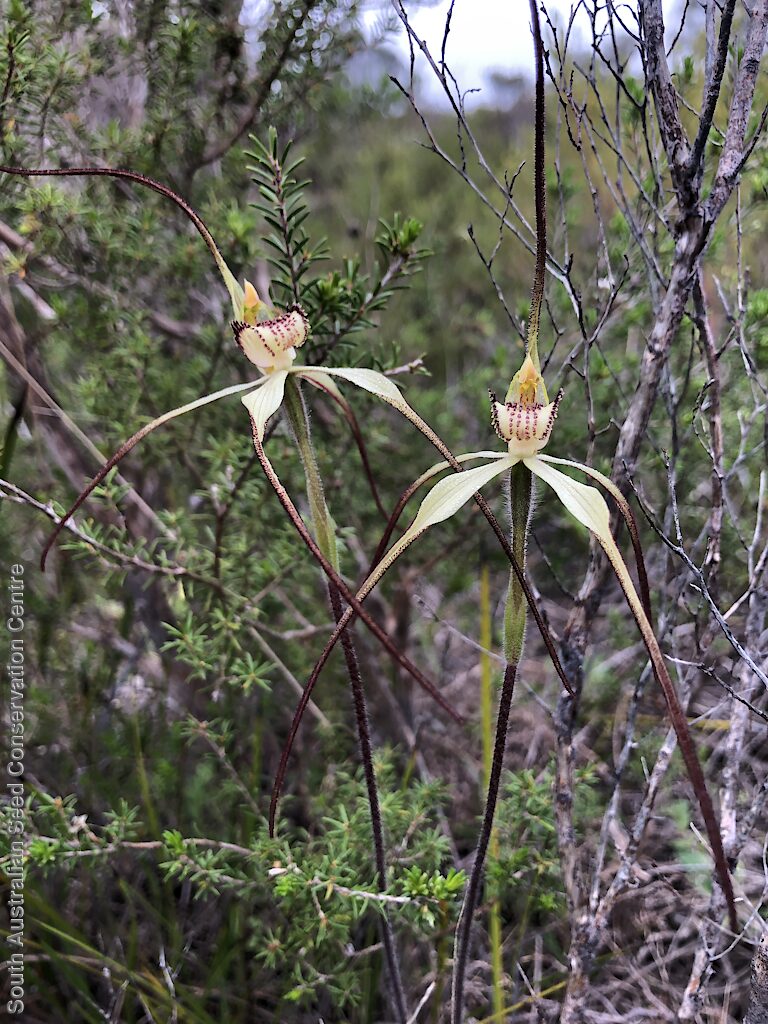
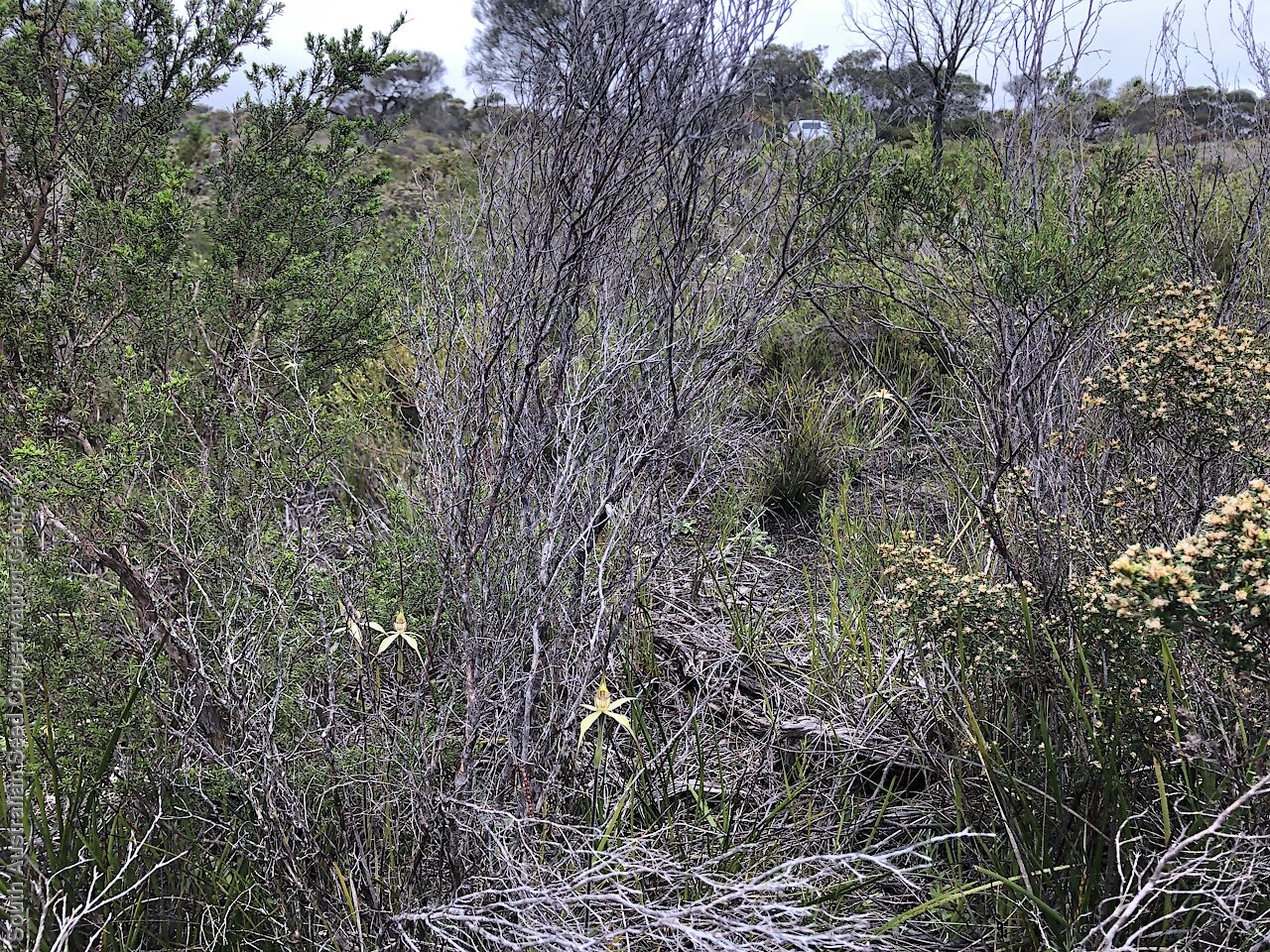
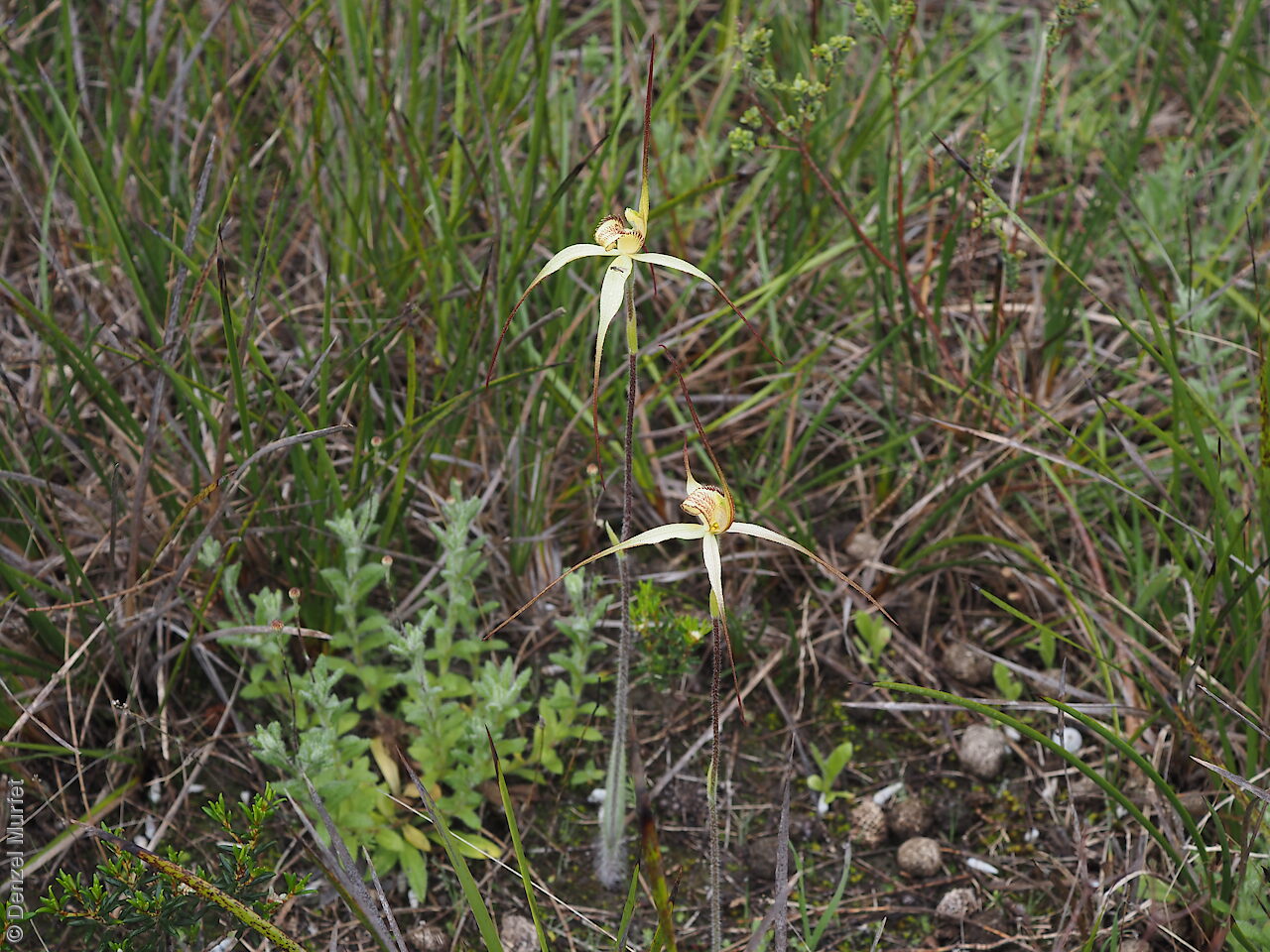
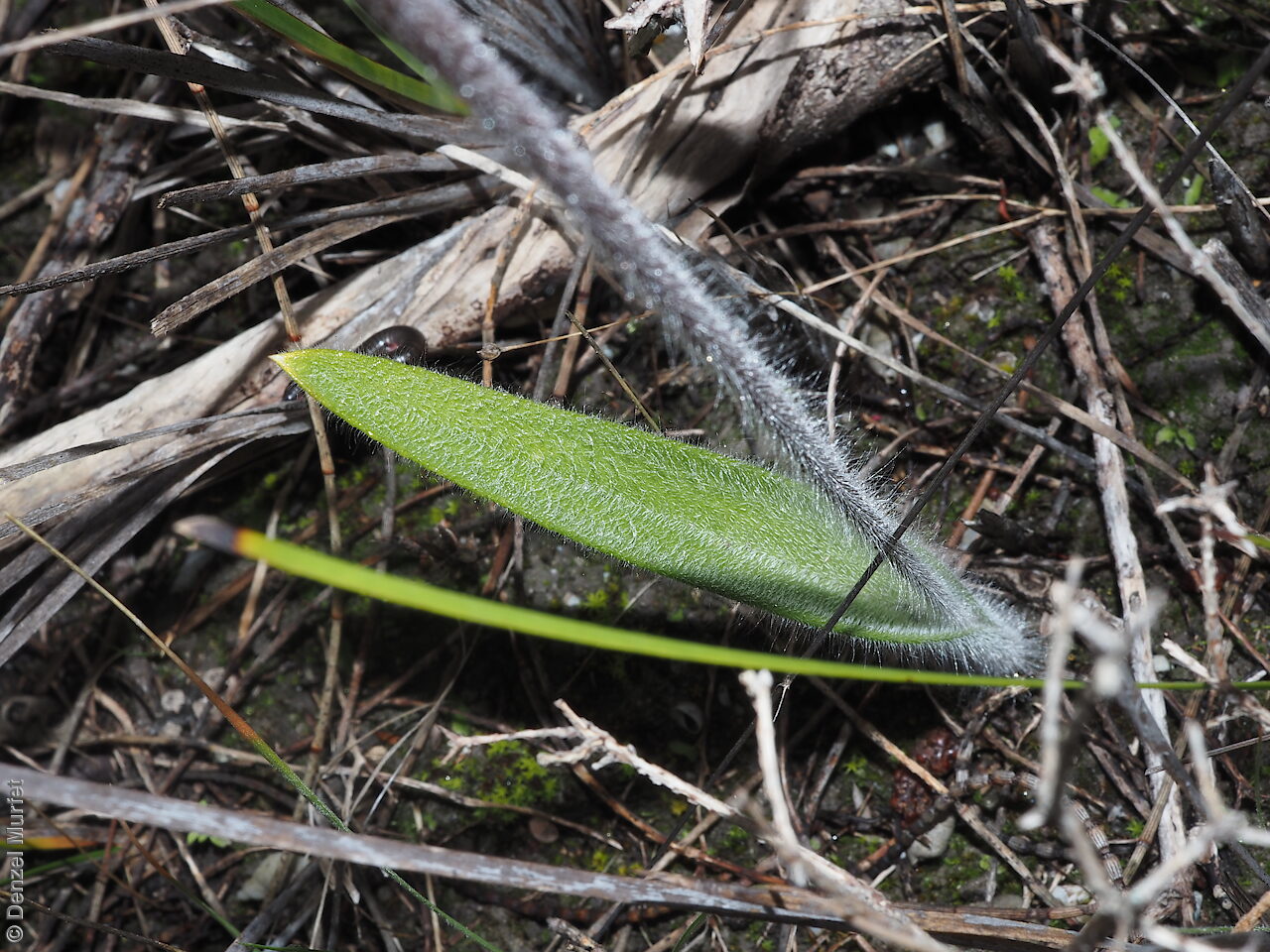
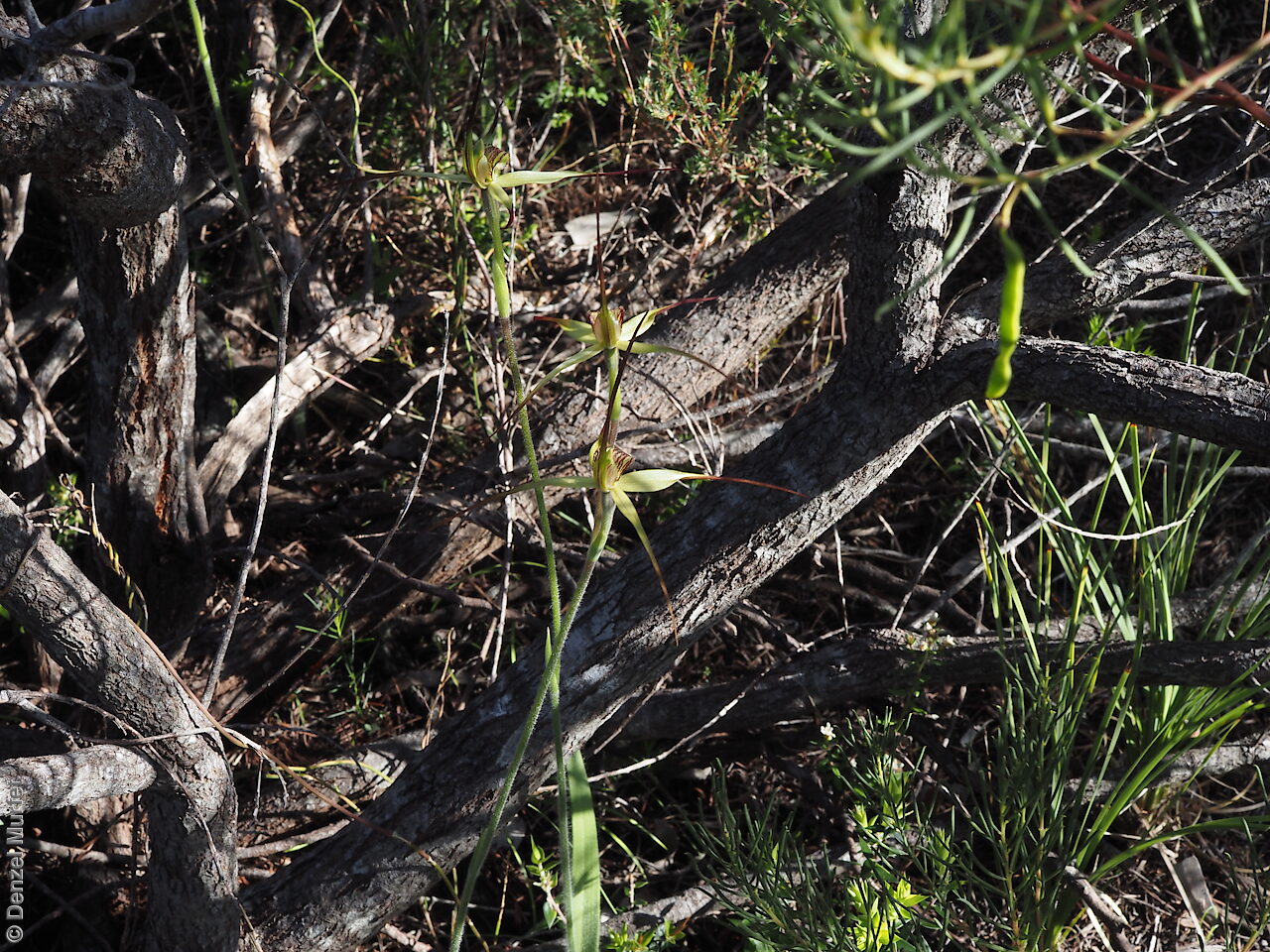
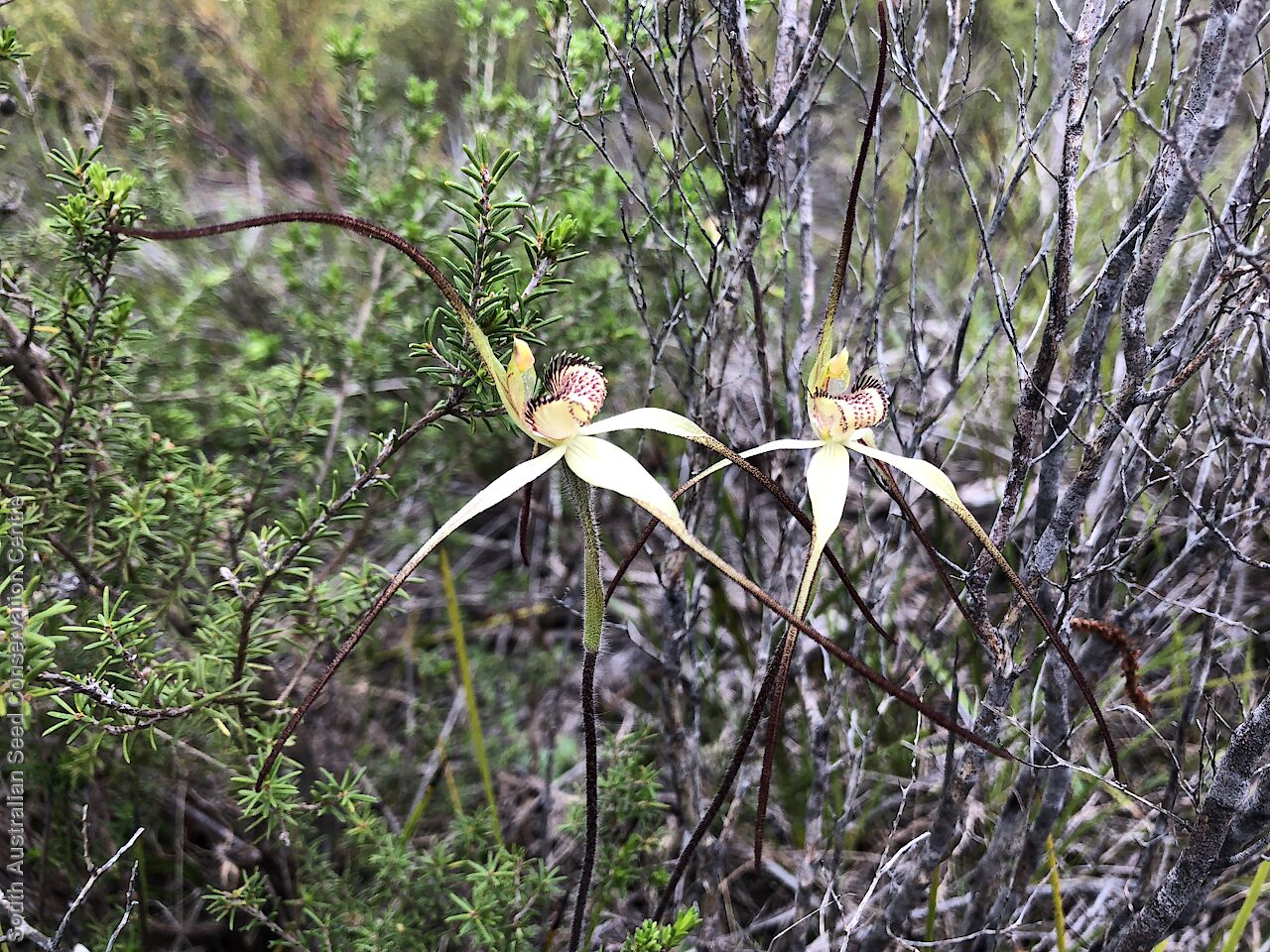
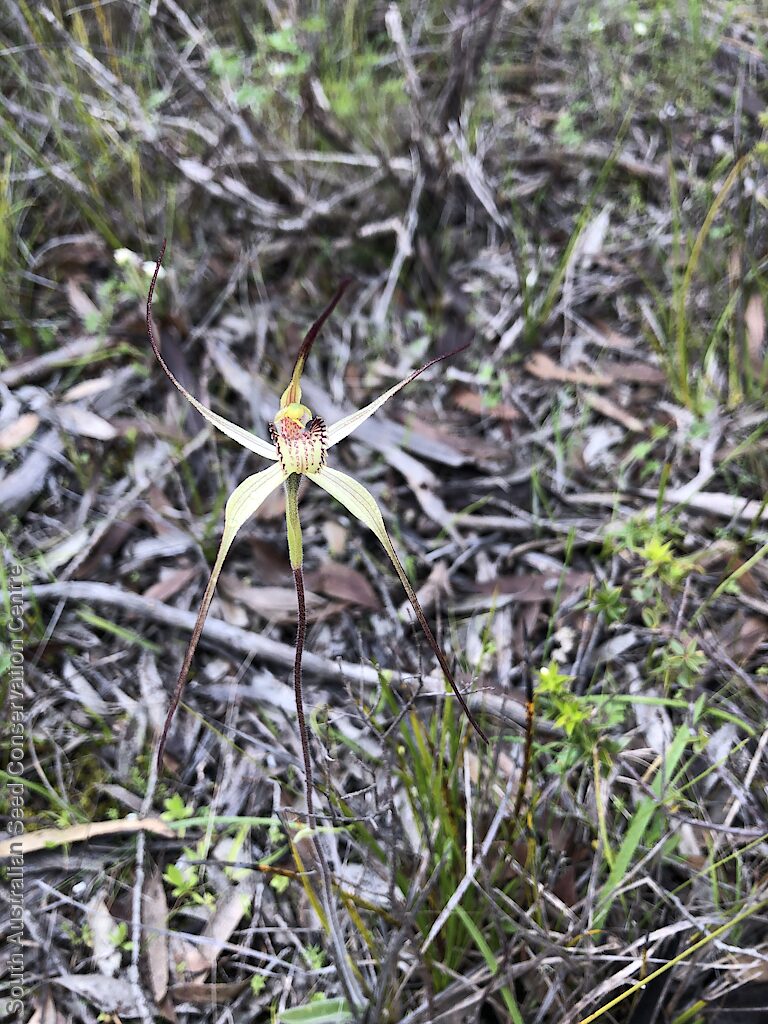
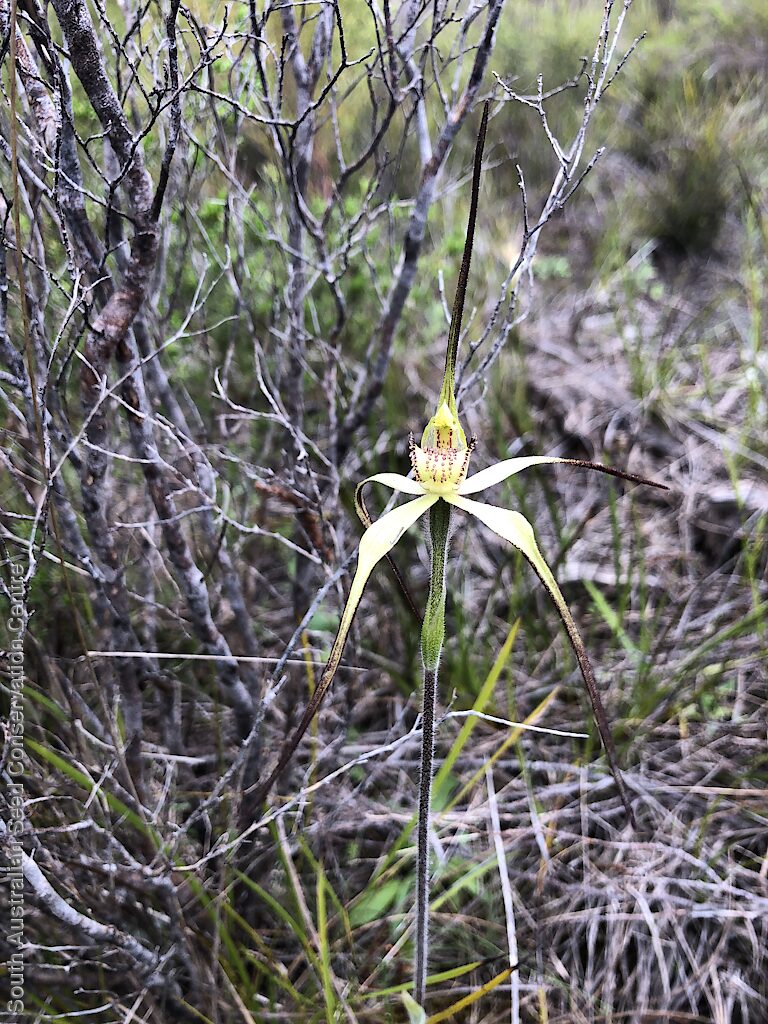
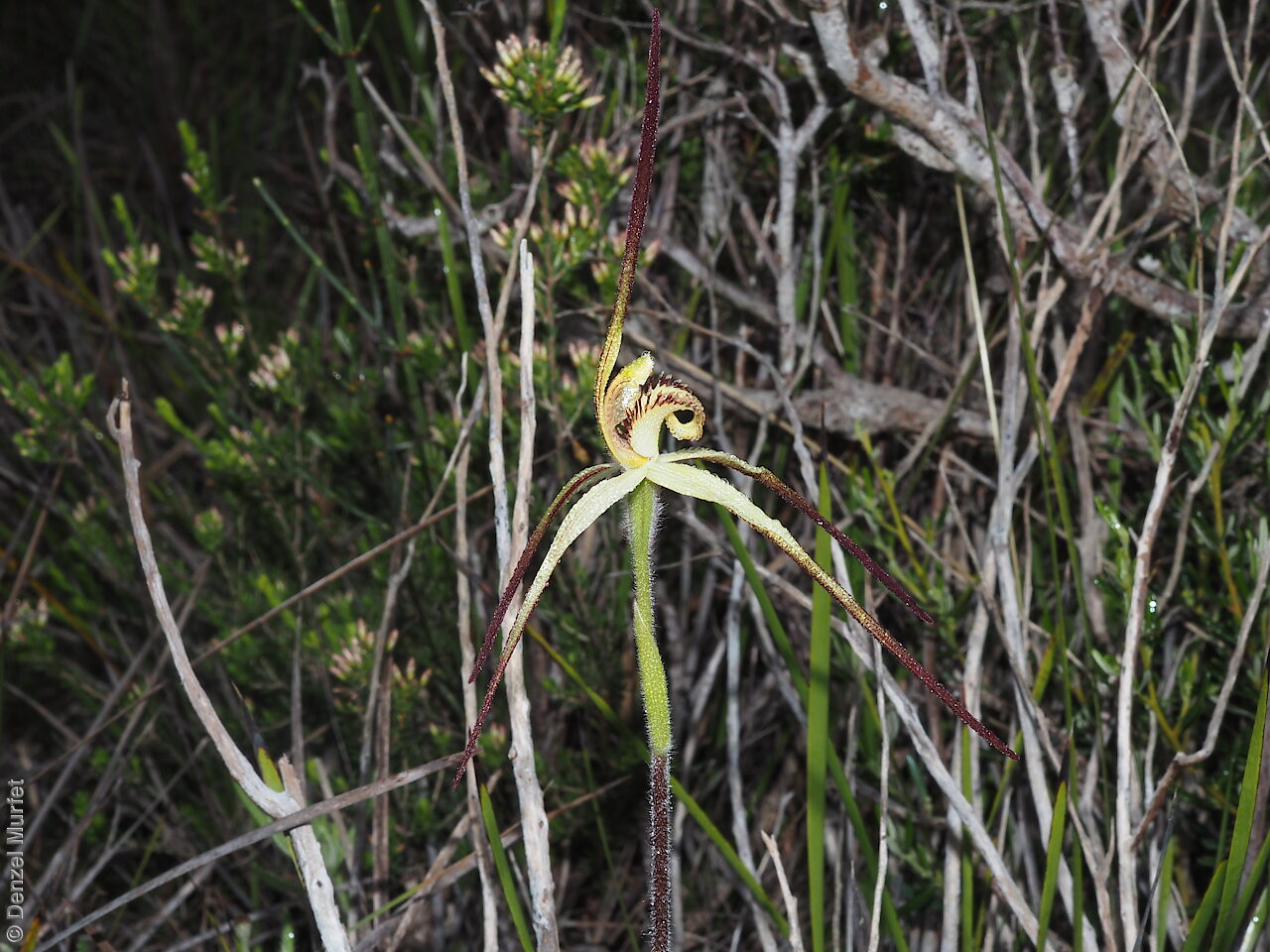
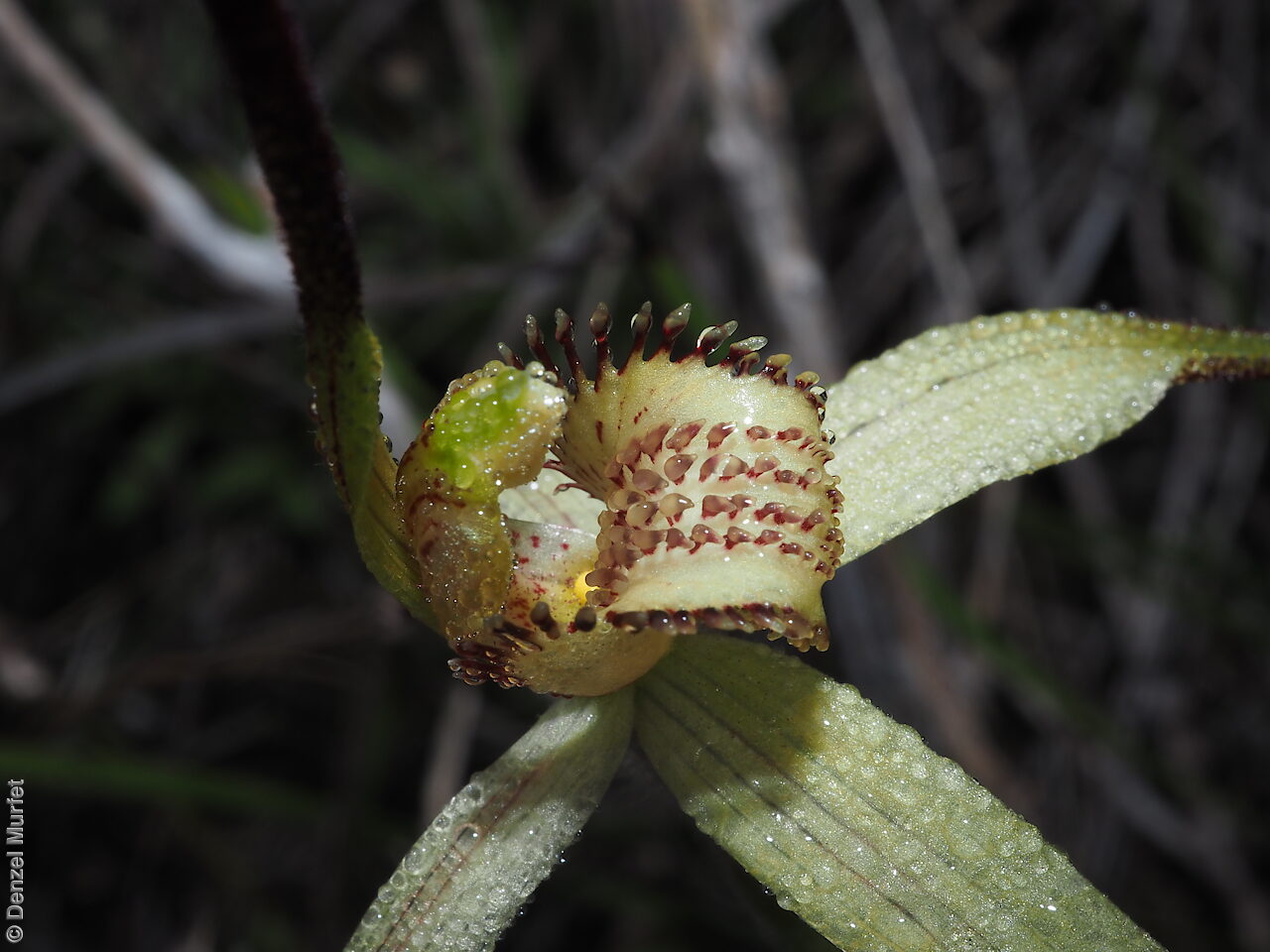
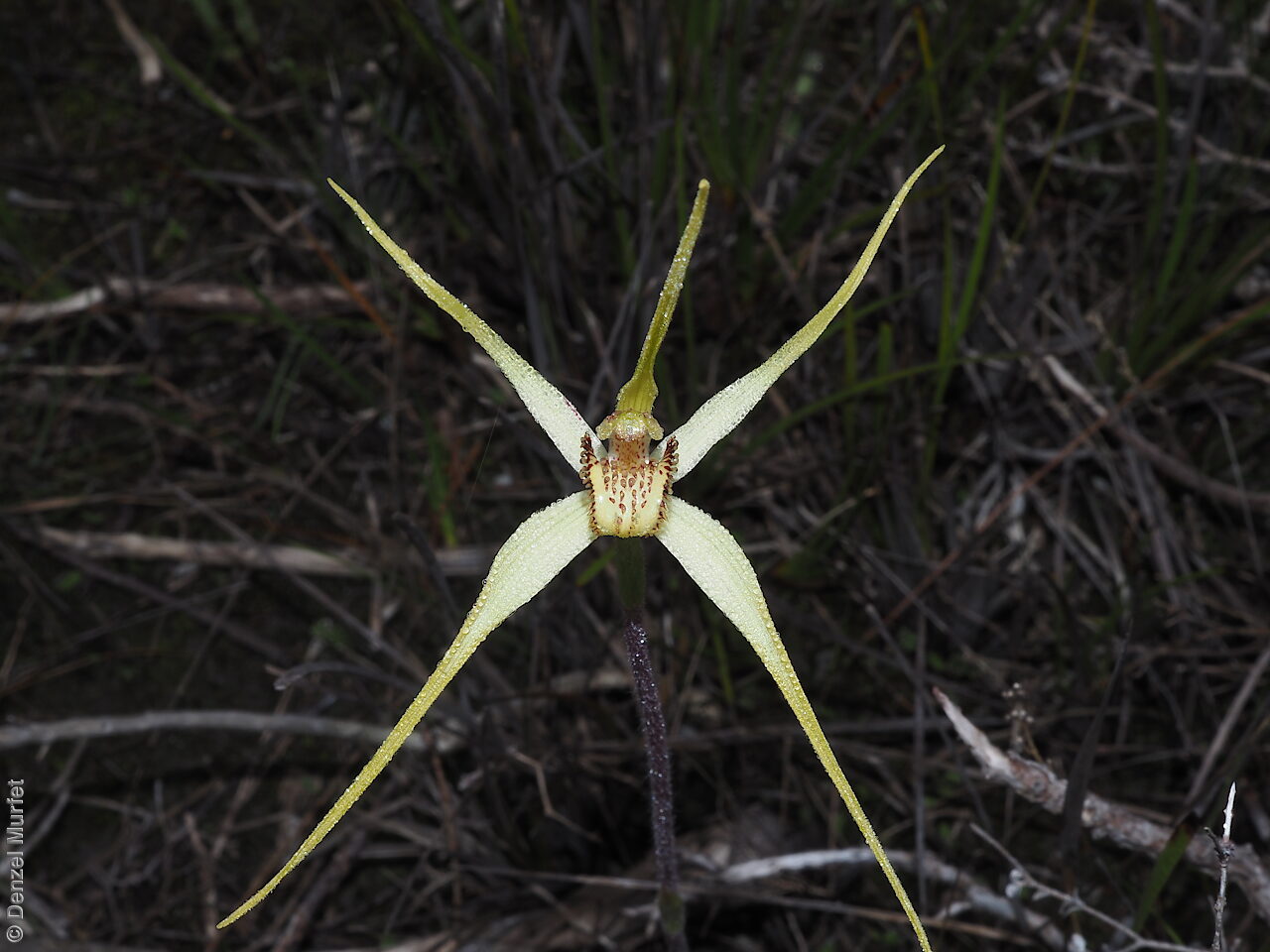
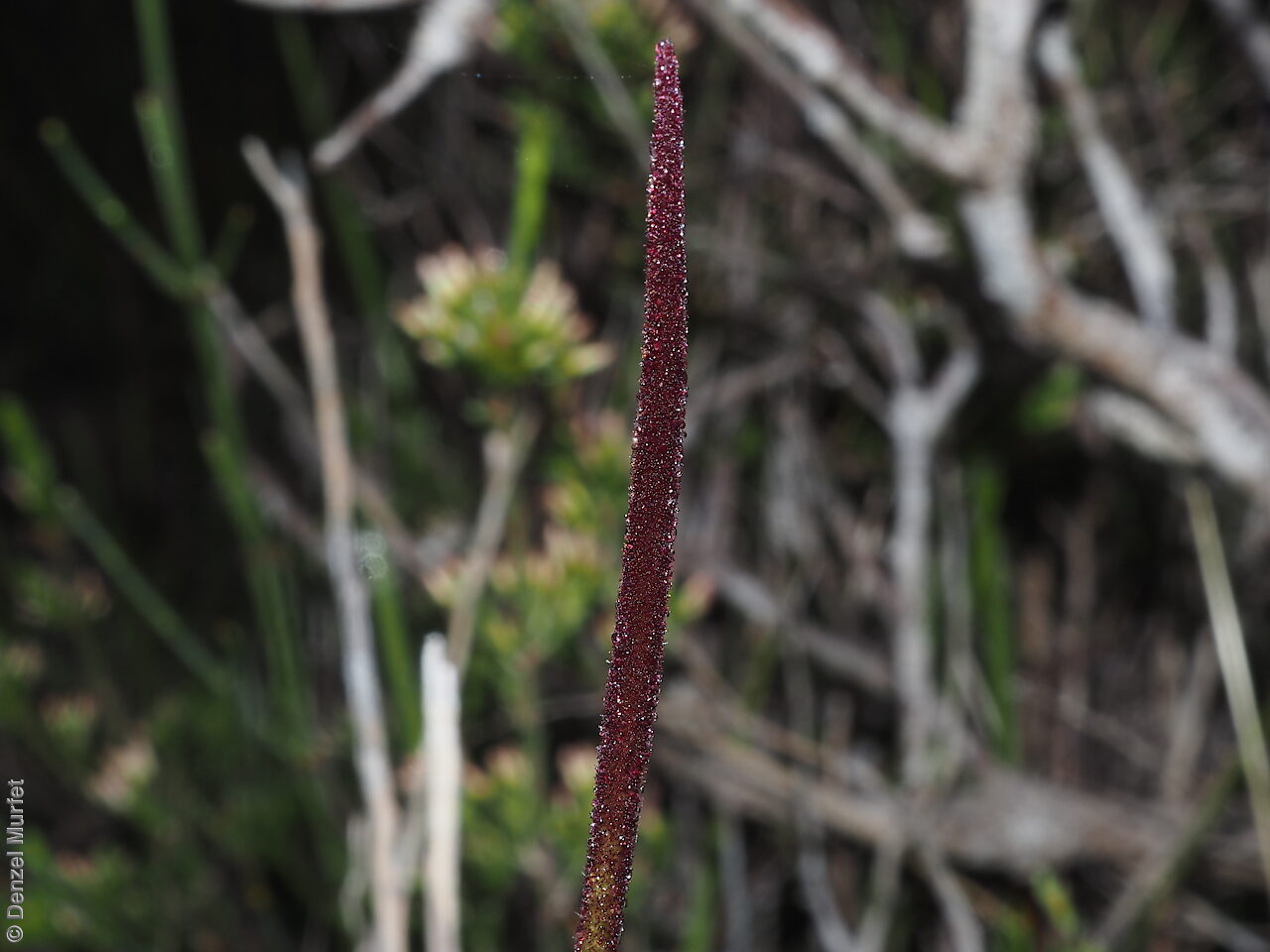
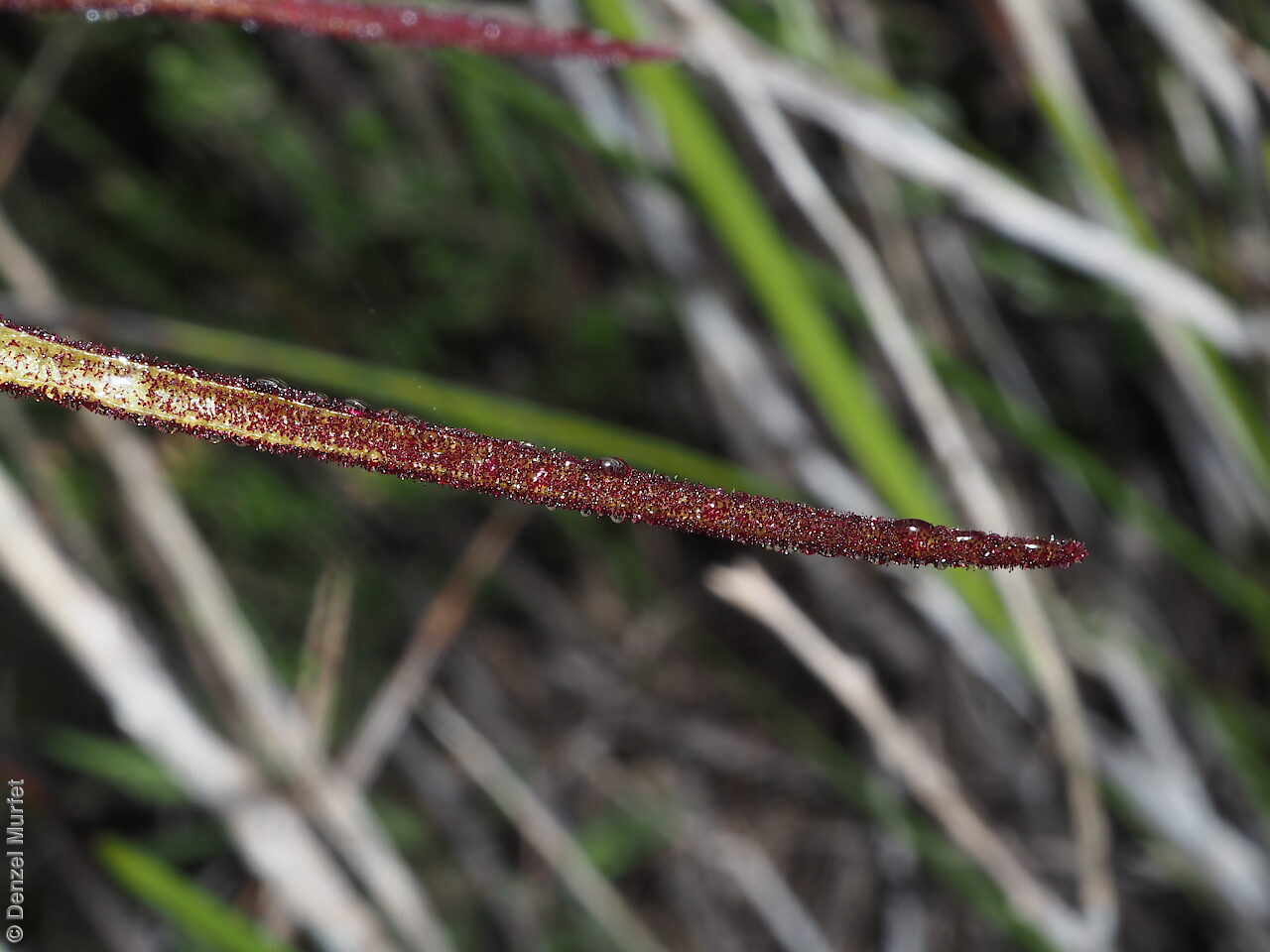
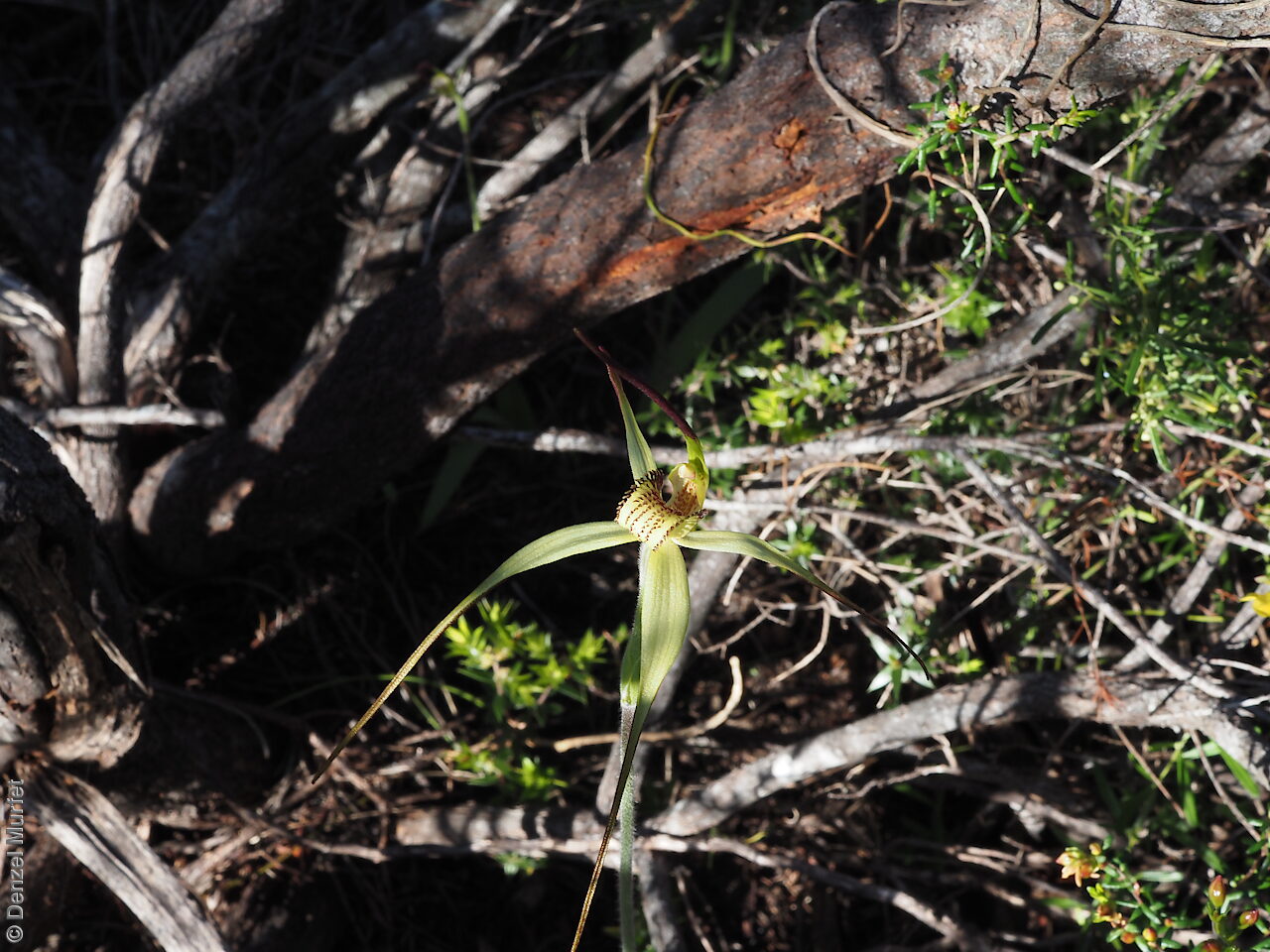
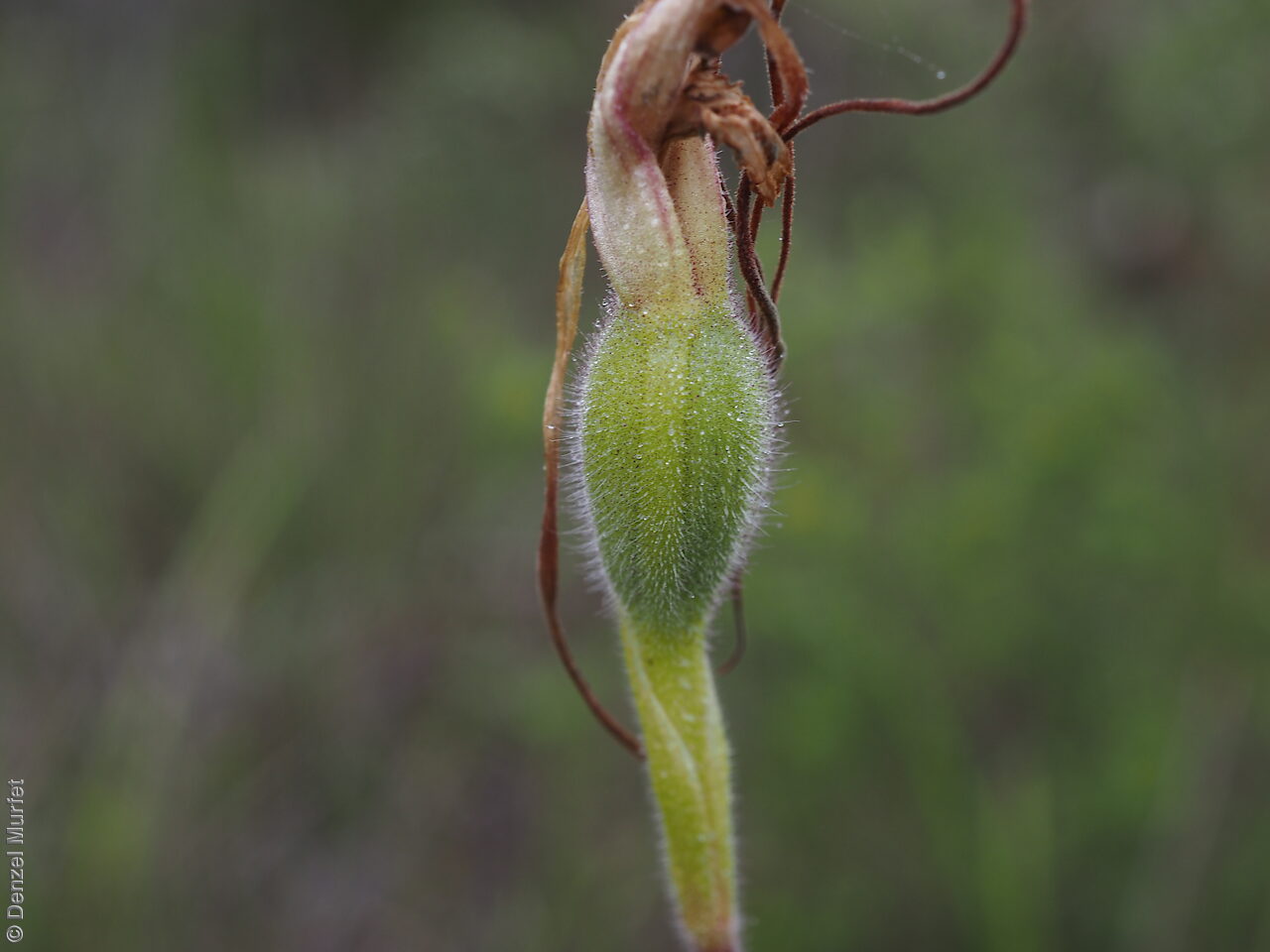
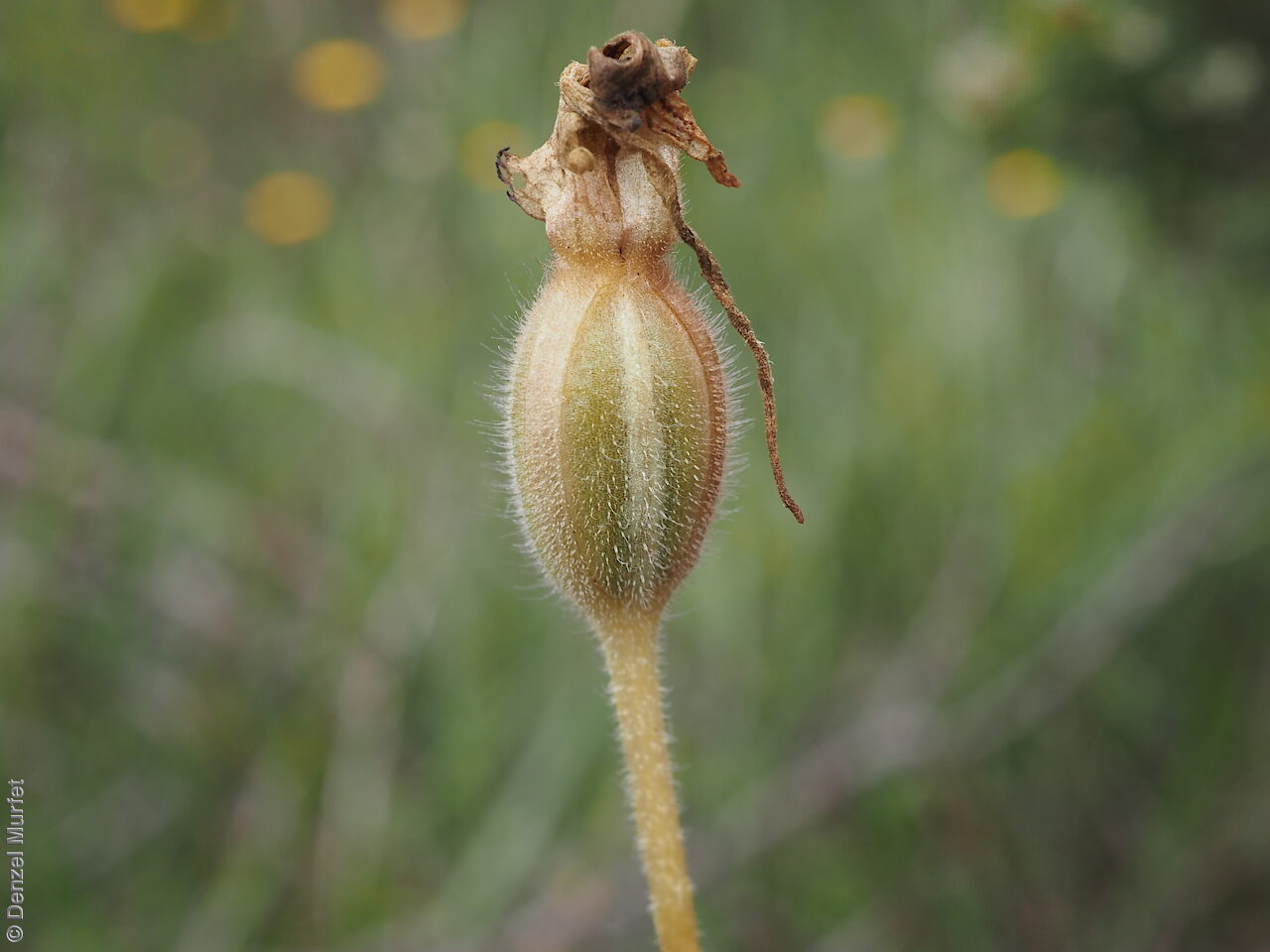
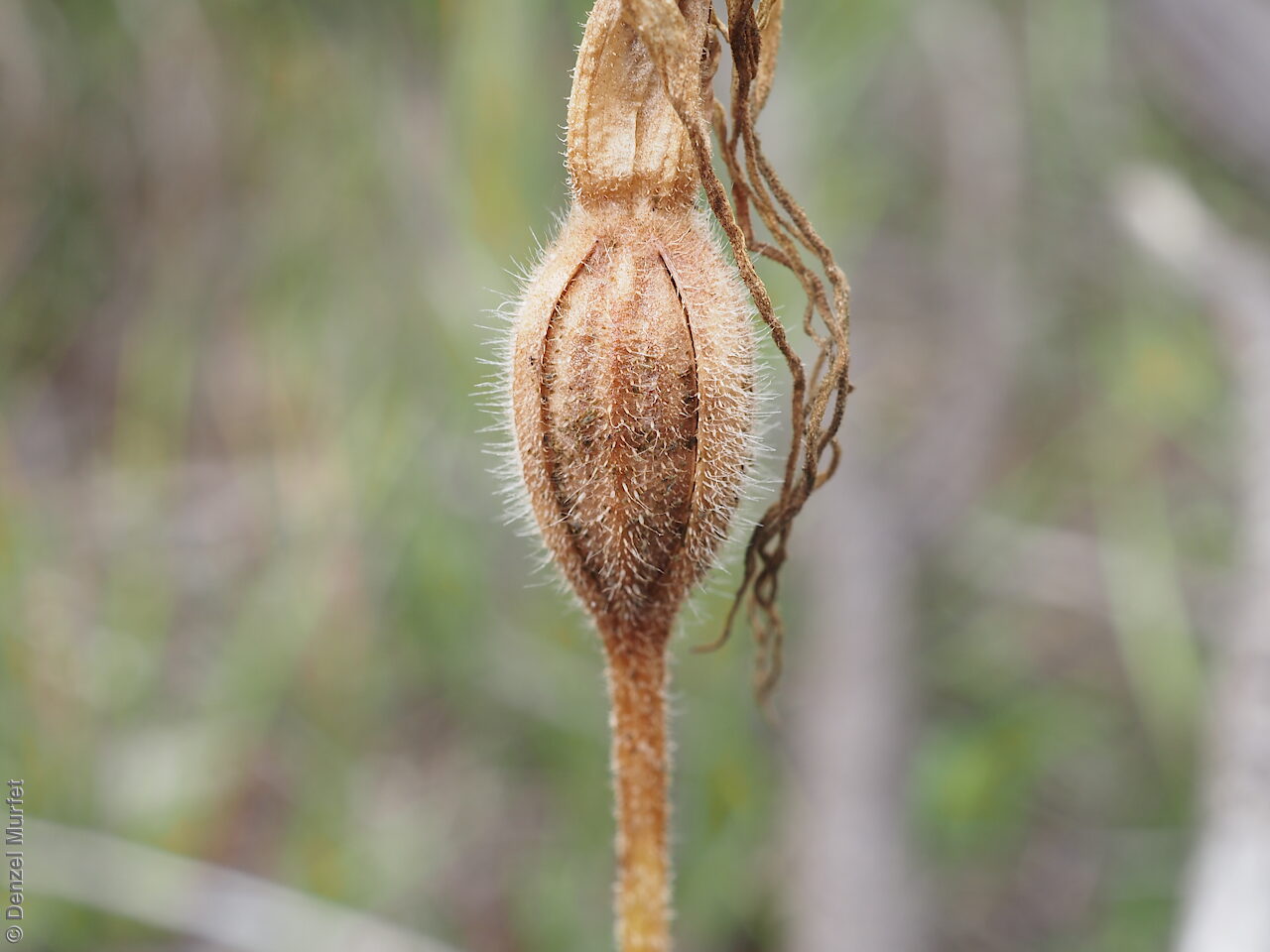


Prior names
Caladenia patersonii, partly
Arachnorchis fuliginosa
Etymology
Caladenia from the Greek 'kallos' meaning beauty and 'aden' meaning a gland, referring to the colourful labellum and the glistening glands at the base of the column that are present in many of the species. Fuliginosa from Latin meaning 'sooty', referring to the dark-coloured tips on the sepals and petals.
Distribution and status
Endemic to South Australia and restricted to the Yorke Peninsula, growing by the coast on stablilised sandhills in low heath or among sedges under scattered trees. Native. Very rare in South Australia.
Herbarium region: Yorke Peninsula
NRM region: Northern and Yorke
AVH map: SA distribution map (external link)
Plant description
Annual herb growing from an underground tuber, with a single rigid leaf covered in soft hairs. Inflorescence on a long slender stalk with one or two cream to yellowish-green flowers. Petals and sepals are long and broad at the base then tapering, spreading then drooping with dark thickened granular tips. The labellum is ovate-cordate and strongly recurved. The lamina is cream-yellow with margins fringed with crimson teeth and 6 to 8 rows of crimson club-shaped calli reducing toward the apex. Leaves or flowers do not appear every year. Flowering between September and October. Fruits are pale-brown hairy, papery ellipsoid capsule containing numerous tiny seeds.
Seed collection and propagation
Collect seeds between October and November. Collect fat capsules as they start to dry and turn brown. Pods will split and release the seeds quickly and will require monitoring. To increase the chances of collecting mature pods, it is recommended that a small breathable bag (ie. Organza bags) be used to enclose the developing capsules. Place the capsules in a container that will hold fine seeds and leave to dry for a few weeks or until the capsule split. Then carefully hold the capsule and tap it gently to release the seeds. Store the seeds with a desiccant such as dried silica beads or dry rice, in an air tight container in a cool and dry place, refrigerator or in liquid nitrogen.
| Location | No. of seeds (weight grams) | Number of plants | Date collected | Collection number Collection location | Date stored | % Viability | Storage temperature |
|---|---|---|---|---|---|---|---|
| BGA | 630,500 (0.225 g) | 20 | 3-Nov-2022 | DJD4123 Yorke Peninsula | 21-Jun-2023 | N/C | -18°C, -80°C |
Number of plants: This is the number of plants from which the seeds were collected.
Collection location: The Herbarium of South Australia's region name.
% Viability: Percentage of filled healthy seeds determined by a cut test or x-ray.